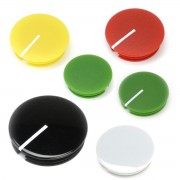
Elma Classi Knob Caps
Also called electrical steel or transformer steel, is specialty steel tailored to produce certain magnetic properties. Some properties are small energy dissipation per cycle, or low core loss, high permeability and magnetic shielding. The material is usually manufactured in the form of cold-rolled strips less than 2 mm thick. Its own special grain structure is because a seven days recrystallization heat treatment after cold-rolling. The difference conventional steel, which consists of a chaotic arrangement of small crystals adhering to each other. The grains of the electro sheets are actually extremely large and also regarding orientation of their crystal axes aligned uniformly. Cause its grain oriented structure the material contracts to the de-magnetisation process very less resistance, in alternating 50 times a second, than conventional steels.
Bakelite (pron.: /ˈbeɪkəlaɪt/ BAY-kə-lyt), or polyoxybenzylmethylenglycolanhydride, is an early plastic. It is a thermosetting phenol formaldehyde resin, formed from an elimination reaction of phenol with formaldehyde. It was developed by Belgian-born chemist Leo Baekeland in New York in 1907.
Bakelite is still used today for knobs, handles, buttons, wire insulation, related automotive components, and industrial electrical-related applications. In contrast to thermoplast, bakelit is constant against heat and acid. Another advance of bakelite is the durability.
A class-D amplifier is an electronic amplifier where all power devices are operated as binary switches.
They are either fully on or fully off. They are also called switching amplifier.
The benefits of class-d amps are less power consumption, less heat production and not the need of costly passive/active cooling.
This properties resulting the possibility to use very small cases with minimal cooling effort.
Class-D amplifiers: Hypex, Class-D
Mu-metal is a range of nickel-iron alloys that are known for their high magnetic shielding. The high magnetic permeability makes mu-metal useful for shielding against 50-60hz-frequency or static magnetic radiation. The abbreviation mu (μ) comes from a Greek letter which represents permeability in physics. Mu-metal is available on the market in different shapes, there are MuMetal tapes, strips, cans and sheets. Once Mu-metal sheets are bend to much, they loose a little bit of magnetic shielding efficiency.
We ship worldwide!
| Europa Letter: | only 9,95EUR |
| World Letter: | only 9,95EUR |
| World parcel: | from 14,90EUR |
